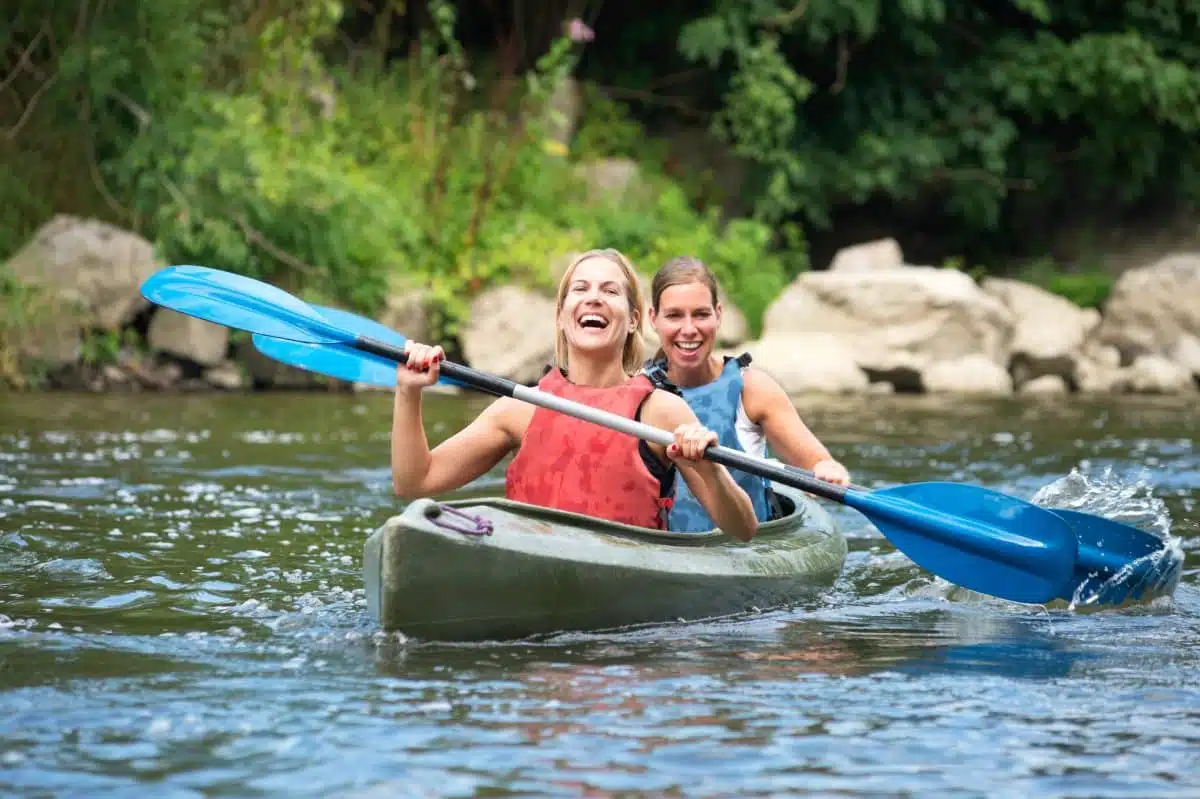The Dominican Republic, a jewel of the Caribbean, is renowned for its pristine beaches, rich biodiversity, and commitment to eco-tourism and conservation. This guide explores the heart of the island. These showcasing destinations offer outdoor activities promoting environmental sustainability and supporting local communities. From the lush landscapes of Los Haitises National Park to the mountainous terrains of Jarabacoa, the Dominican Republic offers a plethora of eco-adventures for the conscious traveler.
1. Los Haitises National Park
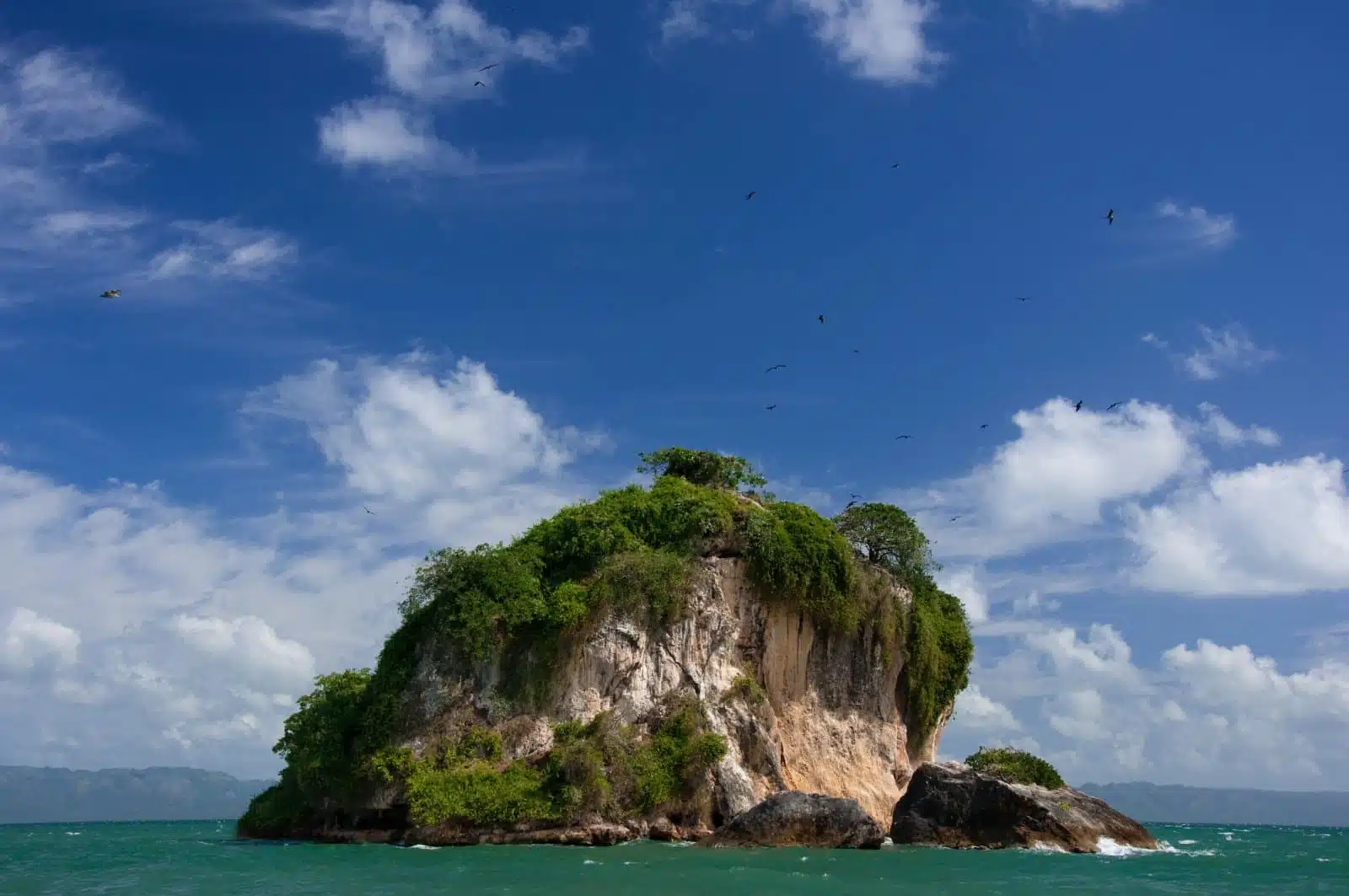
Image Credit: Shutterstock / Francois Gagnon
Los Haitises National Park, a sanctuary of ecological diversity and historical depth, offers an unparalleled glimpse into the Dominican Republic’s natural and cultural heritage. As you navigate through the park’s extensive mangrove forests by kayak, you’ll encounter a labyrinthine water world, home to a myriad of bird species, including the elusive Ridgway’s Hawk and the majestic frigate bird. The park’s rugged limestone karst landscape is dotted with caverns and sinkholes, many of which house ancient Taino petroglyphs, silently narrating the island’s pre-Columbian history. The exploration of these caves reveals the spiritual and daily life of the Taino people through their art. Above ground, the dense rainforest canopy teems with life, offering hiking trails that lead to hidden waterfalls and secluded springs, embodying the park’s commitment to preserving the island’s biodiverse ecosystems.
Insider’s Tip
Hire a local guide to explore the hidden caves and learn about the park’s ecological significance and ancient Taino culture.
When to Travel
The dry season from December to April offers the most comfortable weather for exploration.
How to Get There
Los Haitises is accessible from Samaná or Sabana de la Mar. Boat tours from Samaná are a popular way to visit the park.
2. Jarabacoa
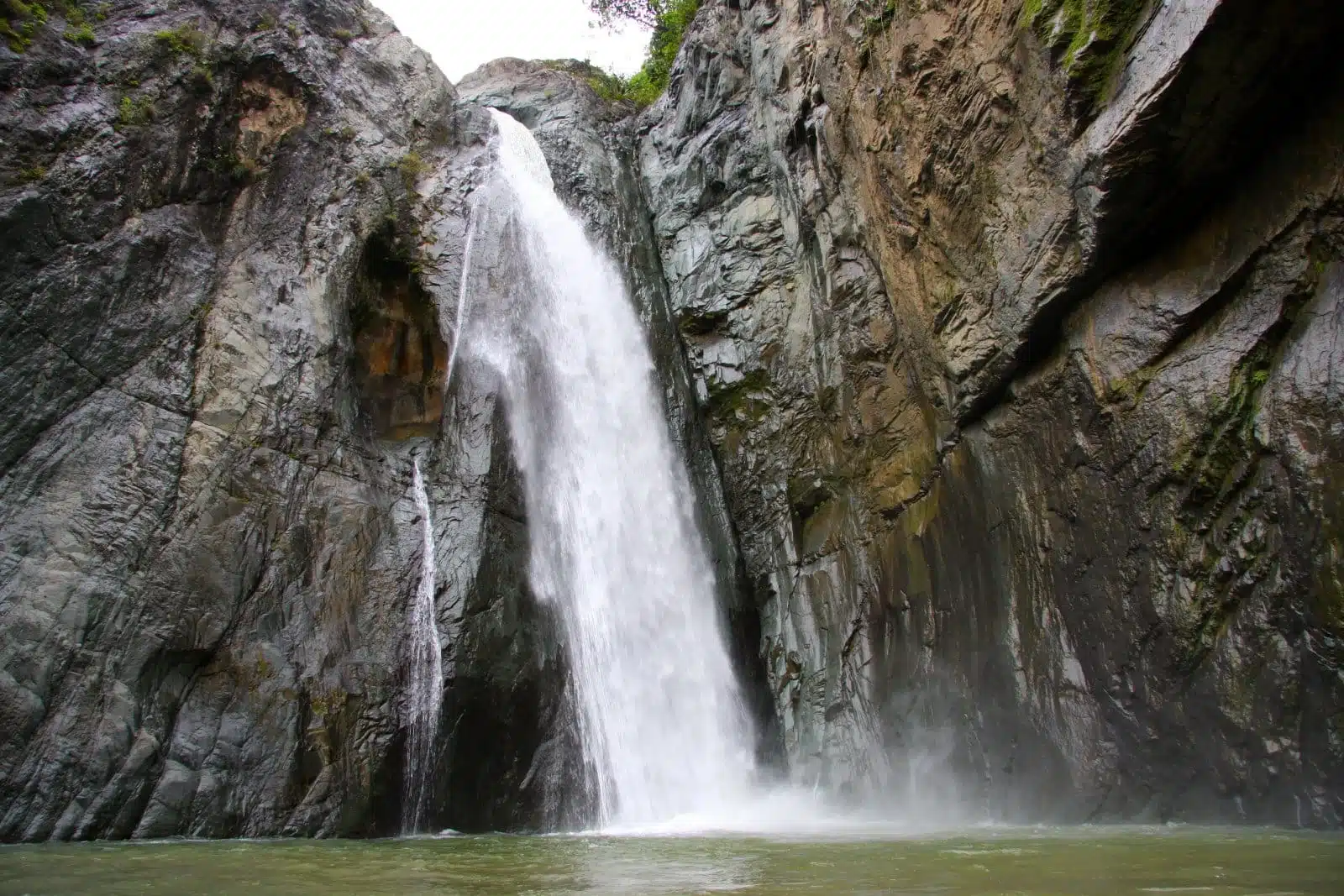
Image Credit: Shutterstock / Sylvia Kania
Jarabacoa emerges as a bastion of eco-tourism and adventure sports, set against a backdrop of rolling mountains and verdant valleys in the heart of the Dominican Republic’s central highlands. This region, often referred to as the “City of Eternal Spring,” maintains a temperate climate that nurtures a rich variety of flora and fauna. The Yaque del Norte River, the longest in the Caribbean, offers thrilling whitewater rafting experiences, challenging both novice and experienced rafters with its rapids. Hiking trails meander through pine forests to reveal the majestic Salto de Jimenoa and Baiguate waterfalls, where the misty air and the thunderous sound of water create a revitalizing atmosphere. For those seeking a bird’s-eye view of the landscape, paragliding over Jarabacoa provides an exhilarating perspective, showcasing the lush beauty of the Dominican highlands. The town’s commitment to sustainable tourism is evident in its eco-lodges and organic farms, which offer insights into local agricultural practices and conservation efforts.
Insider’s Tip
For a unique experience, visit during the coffee harvest season to participate in sustainable coffee tours and tastings.
When to Travel
June to September is ideal for river rafting, while the cooler months from November to March are perfect for hiking.
How to Get There
Jarabacoa is a short drive from Santiago or a few hours from Santo Domingo, with public buses available from both cities.
3. Pico Duarte

Image Credit: Shutterstock / Idrialis Castillo
Ascending Pico Duarte, the Caribbean’s highest peak, presents a challenging yet rewarding trek through diverse ecosystems, from arid scrublands at its base to lush cloud forests near its summit. This journey through the Dominican Republic’s rugged interior offers trekkers a unique opportunity to witness firsthand the island’s ecological diversity. The trek to Pico Duarte is a pilgrimage through changing landscapes that host endemic species, such as the Hispaniolan trogon and the pine warbler, which are rarely seen elsewhere. Nights spent camping under the stars provide a serene moment to reflect on the day’s journey, with clear skies offering spectacular views of the Milky Way. The summit, standing at over 3,000 meters, affords panoramic views of the island, stretching from the verdant Cibao Valley to the sparkling Caribbean Sea, making the arduous trek worthwhile for those committed to experiencing the Dominican Republic’s natural splendor.
Insider’s Tip
Embark on the trek with a certified local guide and pack out all trash to minimize your environmental impact.
When to Travel
The dry season from December to April provides the safest conditions for the trek.
How to Get There
The trek typically starts from Jarabacoa or La Ciénaga in the Central Cordillera. Both towns are accessible by road from major cities.
4. Valle Nuevo National Park
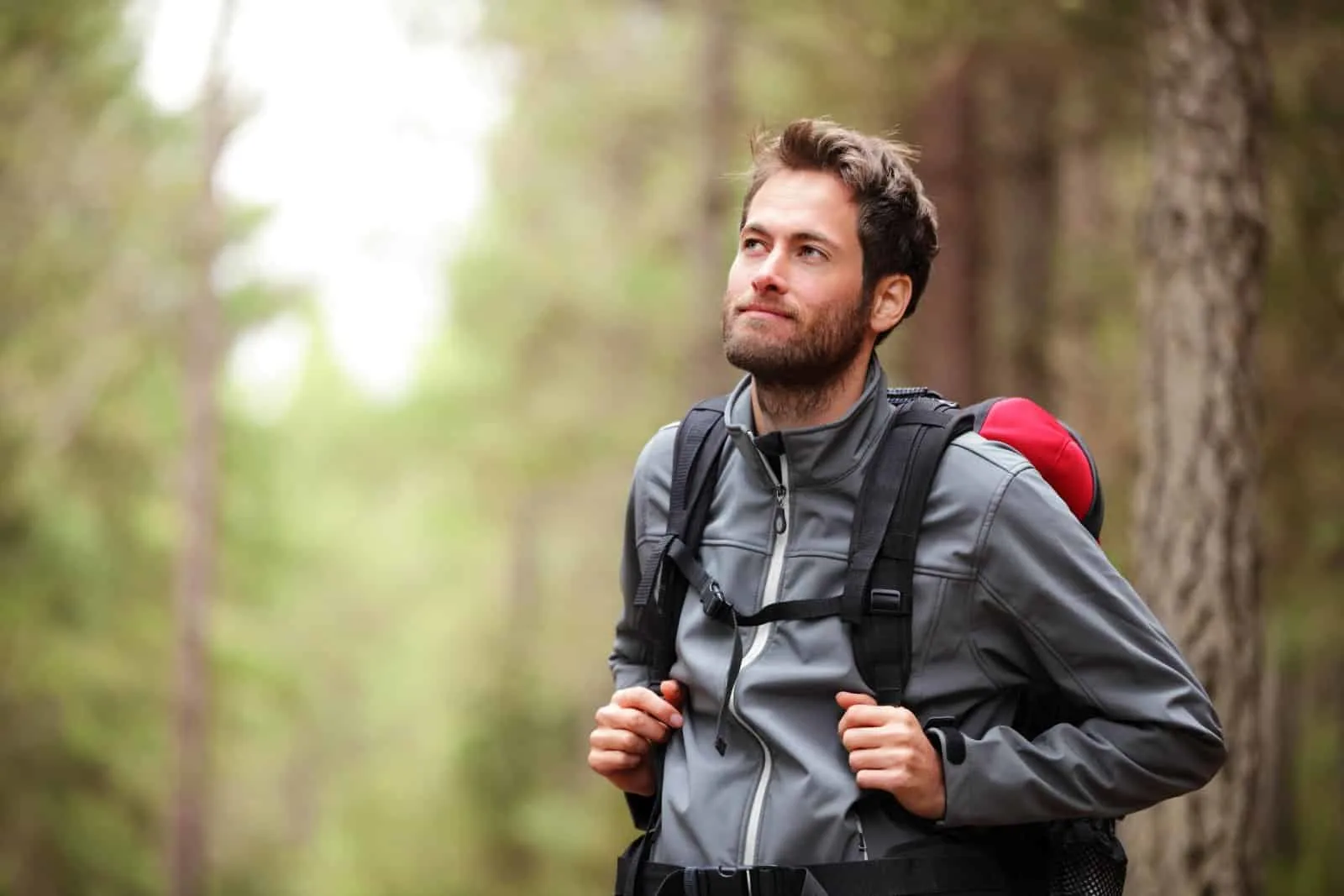
Image Credit: Shutterstock / Maridav
Valle Nuevo National Park, often hailed as the “Dominican Alps,” captivates visitors with its stunning alpine landscapes, characterized by rolling hills, dense pine forests, and colorful alpine meadows. The park serves as a critical water source for the island, with numerous rivers and streams originating within its boundaries. The cool, crisp air and the sprawling vistas from atop its plateaus offer a refreshing escape from the tropical heat found elsewhere on the island. Hiking trails lead adventurers to secluded waterfalls and past crystal-clear streams, inviting moments of reflection and connection with nature. Camping in Valle Nuevo is an exercise in sustainability and minimal impact, allowing visitors to immerse themselves in the park’s pristine environments. The park’s diverse habitats support a wide range of wildlife, including the rare Hispaniolan crossbill and the endemic Hispaniolan pine, underscoring the importance of its conservation efforts and the role of eco-tourism in preserving these natural treasures.
Insider’s Tip
Dress in layers, as temperatures in Valle Nuevo can vary dramatically, and be prepared for cooler nights.
When to Travel
Visit between November and March when the weather is cooler and the visibility is best.
How to Get There
Valle Nuevo is accessible from Constanza, a mountain town that can be reached by road from Santo Domingo or Santiago.
5. Samaná Peninsula
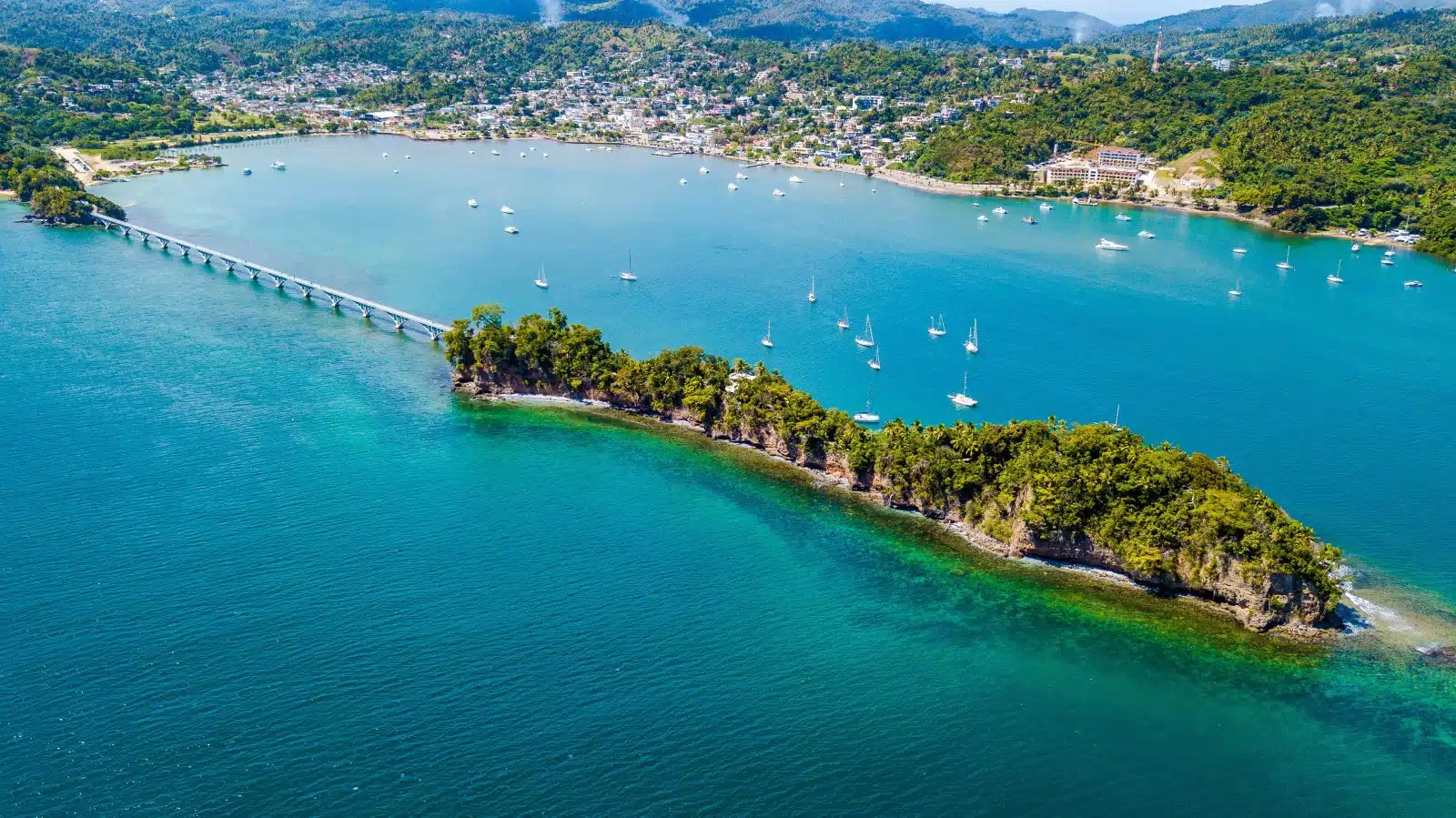
Image Credit: Shutterstock / AurelioaPhoto
The Samaná Peninsula’s lush landscapes and secluded beaches showcase the Dominican Republic’s natural beauty and efforts to preserve such wonders. This slender strip of land juts into the Atlantic, offering a mix of serene beaches, dramatic cliffs, and dense tropical forests. The peninsula’s commitment to eco-tourism is evident in its carefully managed whale-watching tours, which allow visitors to witness the majestic humpback whales in their natural habitat. This truly awe-inspiring experience emphasizes the importance of marine conservation. The Limón Waterfall, accessible through guided hikes, cascades 50 meters into a serene pool, offering a refreshing respite after a journey through the peninsula’s rich biodiversity. Snorkeling in the crystal-clear waters around Cayo Levantado reveals vibrant coral reefs teeming with life, highlighting the underwater beauty of the Caribbean. The Samaná Peninsula’s blend of natural attractions and sustainable tourism practices makes it an ideal destination for eco-conscious travelers seeking to explore the Dominican Republic’s unique ecosystems.
Insider’s Tip
For whale watching, visit between January and March when humpback whales migrate to the Samaná Bay to breed and give birth.
When to Travel
The dry season from December to April is the best time to enjoy the peninsula’s outdoor activities.
How to Get There
Samaná is accessible by road from Santo Domingo, with the new highway reducing travel time significantly. Flights to Samaná’s El Catey International Airport are also available.
6. Monte Cristi National Park
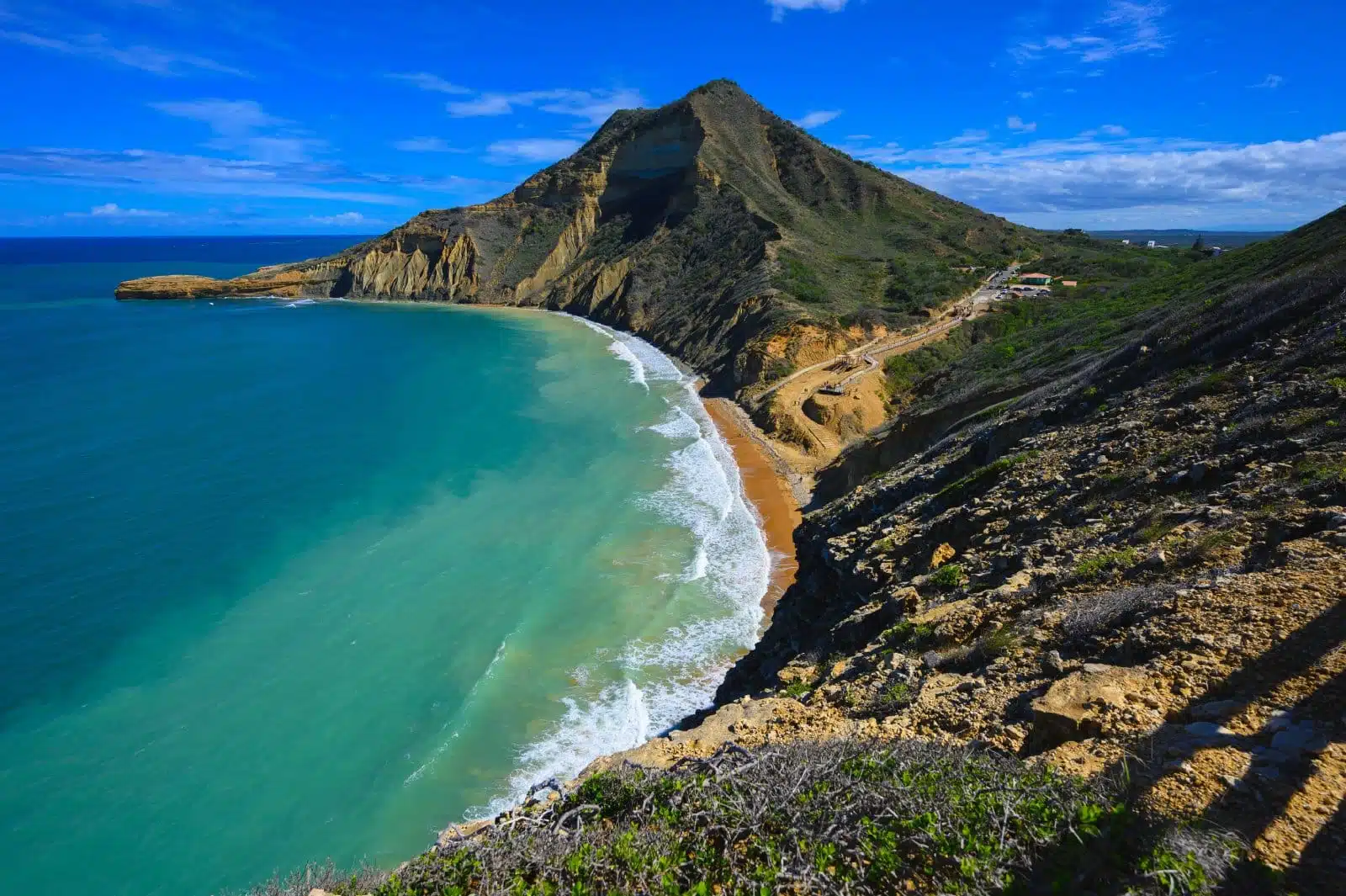
Image Credit: Shutterstock / Aleks Khan
Monte Cristi National Park, located northwest of the Dominican Republic, contrasts the country’s more frequented tropical landscapes. Dominated by the iconic El Morro, a sheer limestone cliff that rises dramatically from the sea, the park’s unique topography includes mangrove forests, subtropical dry forests, and saline lagoons. This diverse ecosystem is a haven for birdwatchers, with species such as the American flamingo and the Royal tern making their home here. The underwater landscapes are equally compelling, with coral reefs and sunken ships offering excellent opportunities for snorkeling and diving, providing a glimpse into the marine biodiversity and historical shipwrecks beneath the waves. Monte Cristi’s commitment to preserving its natural and historical assets while promoting eco-friendly tourism allows visitors to explore this unique area responsibly. The park’s relatively remote location ensures that its beaches and natural features remain unspoiled, offering a serene and intimate experience of the Dominican Republic’s natural beauty.
Insider’s Tip
Visit the salt flats within the park for a surreal landscape and birdwatching opportunities, especially flamingos.
When to Travel
The cooler, drier months from November to April are ideal for exploring the park’s diverse ecosystems.
How to Get There
Monte Cristi is best reached by road from Santiago or Santo Domingo. Local guides in Monte Cristi offer park tours.
7. Punta Cana Ecological Reserve
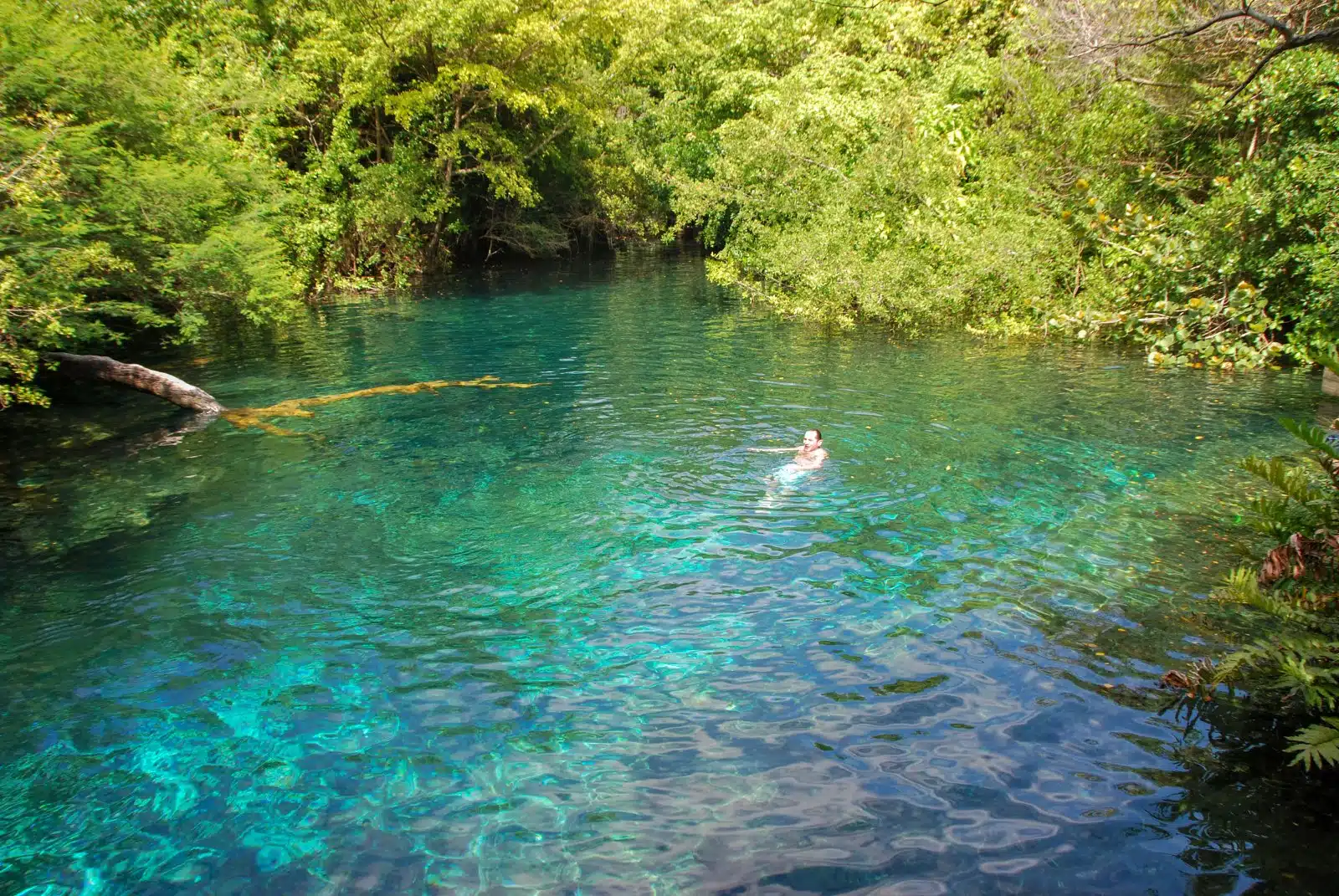
Image Credit: Shutterstock / Studio MDF
The Punta Cana Ecological Reserve is a shining example of sustainable tourism within one of the Dominican Republic’s most popular destinations. This privately managed reserve spans over 1,500 acres of native forest, providing sanctuary to various endemic species, including birds, reptiles, and tropical flora. The network of trails and freshwater lagoons, including the renowned Ojos Indígenas, invites visitors to explore the reserve’s natural wonders at a leisurely pace. These lagoons’ clear, cool waters offer a refreshing swim amidst a lush forest setting, embodying the reserve’s commitment to conservation and eco-friendly recreation. Educational tours led by knowledgeable guides enhance visitors’ understanding of the Dominican Republic’s ecological diversity and the importance of preserving its natural habitats. The reserve’s integration of sustainable practices, from water conservation to organic farming, serves as a model for eco-tourism, demonstrating how environmental stewardship and tourism can coexist harmoniously.
Insider’s Tip
Don’t miss a guided tour of the reserve’s sustainable agriculture projects, including a visit to the organic farm.
When to Travel
Year-round, though the cooler months from December to April offer the most comfortable climate for exploring.
How to Get There
The reserve is located within the Punta Cana Resort & Club and is accessible from Punta Cana International Airport.
8. Cabarete and Sosúa
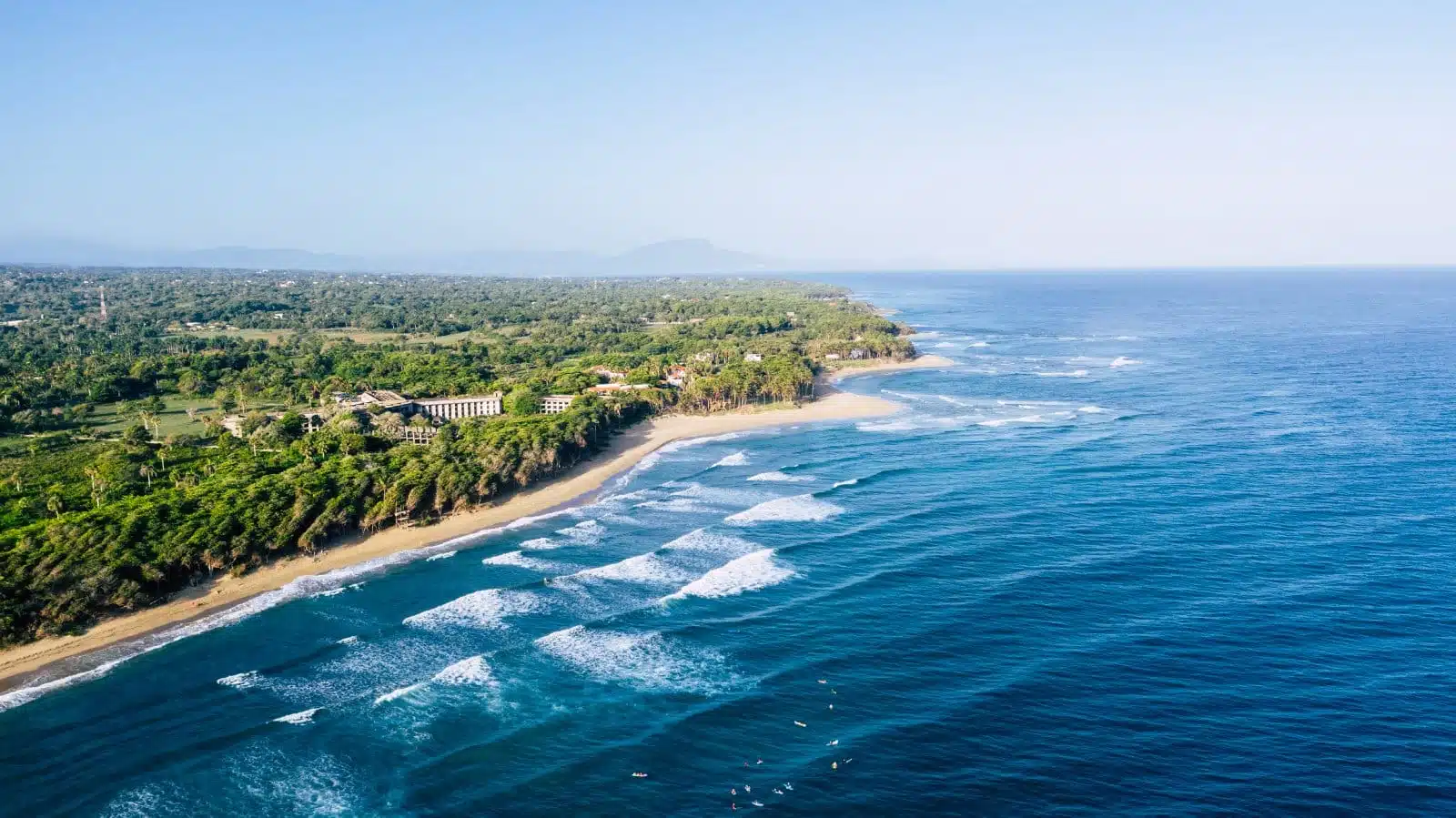
Image Credit: Shutterstock / Hedwin de Los Santos
Cabarete and Sosúa, vibrant towns on the Dominican Republic’s north coast, are renowned for their adventurous spirit and commitment to environmental sustainability. Cabarete, the world-famous kitesurfing and windsurfing destination, harnesses the power of the wind to offer thrilling water sports experiences, while Sosúa’s sheltered bay provides ideal conditions for snorkeling and diving among vibrant coral reefs. These activities offer an immersive experience in the Dominican Republic’s stunning marine environments and foster a deeper appreciation for the need to protect these fragile ecosystems. Local initiatives focusing on coral reef restoration and marine life protection are integral to the towns’ eco-tourism offerings, allowing visitors to participate in conservation efforts directly. The communities’ dedication to sustainable tourism ensures that the area’s natural beauty and biodiversity are preserved for future generations, making Cabarete and Sosúa exemplary destinations for eco-conscious travelers.
Insider’s Tip
Participate in a beach clean-up or coral restoration activity to contribute to the local conservation efforts.
When to Travel
The windy season from June to September is perfect for watersports, while the rest of the year offers excellent conditions for snorkeling and diving.
How to Get There
Both towns are a short drive from the Gregorio Luperón International Airport in Puerto Plata.
9. Cueva de las Maravillas National Park
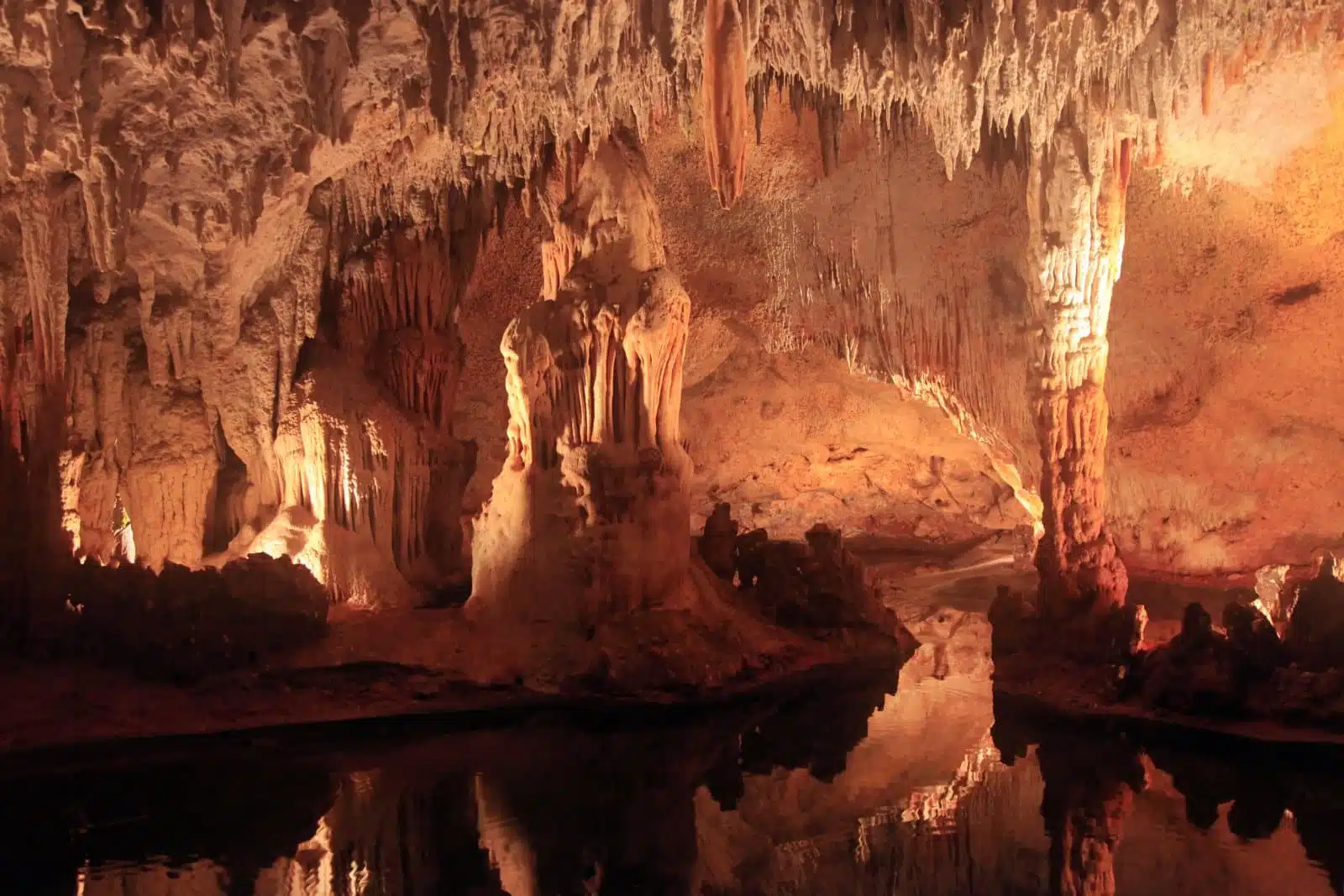
Image Credit: Shutterstock / Bildagentur Zoonar GmbH
Cueva de las Maravillas, or Cave of Wonders, located between San Pedro de Macorís and La Romana demonstrates the Dominican Republic’s rich geological and cultural heritage. This extensive cave system, adorned with hundreds of Taino pictographs and petroglyphs, offers visitors a unique opportunity to step back in time and explore the island’s pre-Columbian history. The carefully managed tours through the cave highlight the importance of preserving this archaeological treasure while minimizing the impact on its delicate ecosystem. The stalactites and stalagmites that decorate the cave’s interior create a natural cathedral, inspiring awe and respect for the natural processes that have shaped this landscape over millennia. The park’s efforts to educate visitors about the significance of these ancient artworks and the need to protect such sites underscore the Dominican Republic’s commitment to cultural conservation and eco-tourism. Cueva de las Maravillas serves as a model for how natural and historical sites can be made accessible to the public to ensure their preservation for future generations.
Insider’s Tip
Opt for the early morning tour to avoid crowds and have a more serene experience exploring the cave.
When to Travel
The cave is a great year-round destination, offering a cool escape from the tropical heat.
How to Get There
The cave is located between San Pedro de Macorís and La Romana, easily accessible by road from Santo Domingo.
10. Bahía de las Águilas
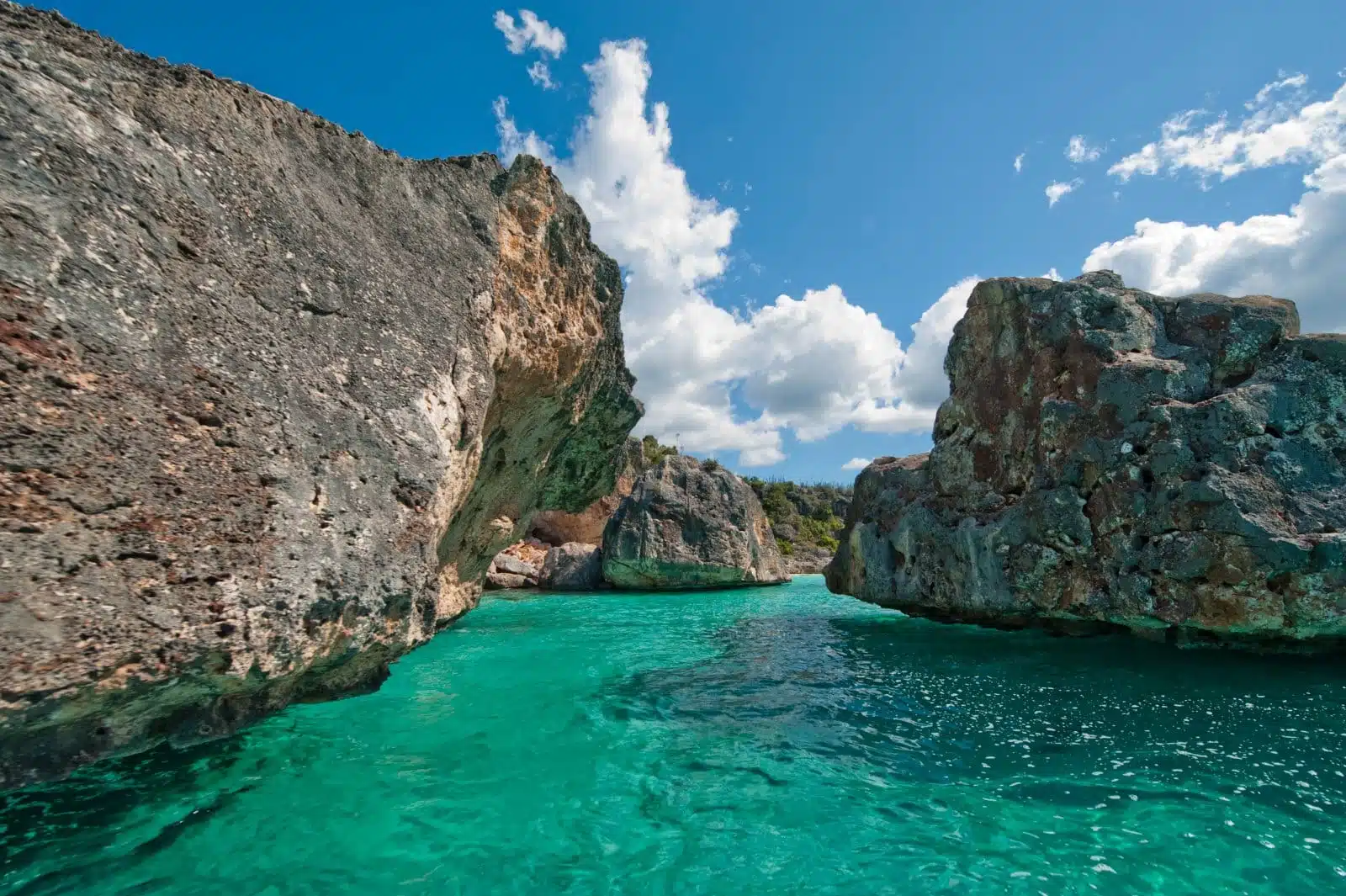
Image Credit: Shutterstock / David Pou
Bahía de las Águilas, located in the remote southwestern corner of the Dominican Republic within Jaragua National Park, is often described as one of the most pristine beaches in the Caribbean. This eight-kilometer stretch of untouched coastline is characterized by its crystal-clear turquoise waters and powdery white sand, set against arid landscapes and rugged cliffs. The bay’s isolation from major tourist developments has preserved its natural beauty and made it a sanctuary for a variety of wildlife, including sea turtles and endemic bird species. The lack of infrastructure in and around Bahía de las Águilas reinforces its status as a bastion of unspoiled nature, offering a tranquil retreat for those seeking to connect with the Dominican Republic’s wild landscapes. The area’s designation as part of a national park underscores the commitment to protecting this unique ecosystem, ensuring that activities such as snorkeling and birdwatching are environmentally responsible. Bahía de las Águilas exemplifies the essence of eco-tourism, where preserving natural beauty is paramount, and a deep respect for the environment defines the visitor experience.
Insider’s Tip
Bring snorkeling gear to explore the vibrant underwater life off the shore, but follow all guidelines to minimize impact on the marine environment.
When to Travel
From December to April, the dry season offers the calmest waters for swimming and snorkeling.
How to Get There
Bahía de las Águilas is most commonly accessed from Pedernales, with boat trips departing from nearby La Cueva.
The Bottom Line
The Dominican Republic offers much more than just beautiful beaches; it’s a destination where eco-adventures and sustainability go hand in hand. By choosing to explore these destinations, you’re immersing yourself in the island’s natural beauty and cultural richness and contributing to preserving its environmental and cultural heritage. As you embark on these eco-adventures, remember that your travel choices can support conservation efforts and local communities, making your journey a positive force for change.
More From The Green Voyage
12 Best Practices for Sustainable Travel in 2024 – How to Travel With Minimal Environmental Impact
Unlocking Hotel Perks – A Traveler’s Guide to Maximizing Hotel Reward Programs for Optimal Benefits
Travel Hacks for Frequent Flyers – 6 Tips and Tricks to Make the Best of Air Travel
The post 10 Eco-Adventures in the Dominican Republic – Sustainable Travel Guide 2024 first appeared on The Green Voyage.
Featured Image Credit: Shutterstock / Corepics VOF.
For transparency, this content was partly developed with AI assistance and carefully curated by an experienced editor to be informative and ensure accuracy.
Tips for Trip Success
Book Your Flight
Find an inexpensive flight by using Kayak, a favorite of ours because it regularly returns less expensive flight options from a variety of airlines.
Book Your Hotel or Special Accommodation
We are big fans of Booking.com. We like their review system and photos. If we want to see more reviews and additional booking options, we go to Expedia.
You Need Travel Insurance!
Good travel insurance means having total peace of mind. Travel insurance protects you when your medical insurance often will not and better than what you get from your credit card. It will provide comprehensive coverage should you need medical treatment or return to the United States, compensation for trip interruption, baggage loss, and other situations.Find the Perfect Insurance Plan for Your Trip
